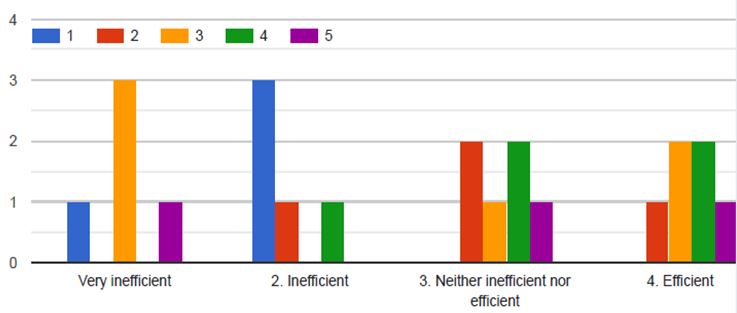Evaluating the Effectiveness of Product Development Strategy on First National Bank Financial Performance
DOI:
https://doi.org/10.5281/zenodo.14792728Keywords:
product development, financial performance, strategy, digital banking, e-wallet first national bankAbstract
Product development strategy is crucial for banks to remain competitive and achieve financial success. This study was aimed at evaluating the effectiveness of product development strategy on the financial performance of FNB in Lusaka. The study adopted a quantitative approach using survey questionnaires and panel analysis of financial data from 09 FNB branches in Lusaka. The results of the study revealed that the majority of respondents were middle-aged males with some experience and a first-degree education. Over 60% were aware of product development strategies, with short- and long-term financing options being key strategies. The study revealed a weak positive relationship between product development strategy and financial performance. The correlation between ROA and the predictor variables (R=0.545 was greater than 0.5) meaning there was a strong positive correlation between ROA and the predictor variables. The coefficient of the regression analysis denotes the amount of deviation in the predicted variable that is to say ROA that is explained by the predictor variables. The square of R=0.297 reveals that 29.7% of the changes in ROA was attributed to predictor variables. The Durbin-Watson test statistic was 1.158 which indicated that no correlation existed among the residuals in the model. Effective product development strategies, such as innovation and customer-centric approach, contributed to improved financial performance. The implication of this study is that, the study's findings will provide insights into the effectiveness of the e-wallet product development strategy in improving financial performance at First National Bank, inform the development of effective e-wallet product development strategies, and contribute to the existing literature on product development strategy and its effectiveness on financial performance.
Based on the obtained results, The study recommends that FNB consider diversifying its product offerings to appeal to a broader demographic range and adopt effective product development strategies, such as innovation and customer-centric approach, to improve financial performance.
Downloads
References
Abor, J., & Adjani, C. K. d. (2007). Corporate governance and the small and medium enterprises sector: Theory and implications. Corporate Governance: The International Journal of Business in Society, 7(2), 111–122. https://doi.org/10.1108/14720700710739769.
Adnoun, G. C. (2017). Corporate governance in small and medium scale enterprises: Any relevance?. SSRN Electronic Journal. https://doi.org/10.2139/ssrn.2839684.
Cadbury, R. (1992) Report of the committee on the financial aspects of corporate governance. London: Gee and Company Publishing Ltd.
Bernard HR. (2002). Research methods in anthropology: Qualitative and quantitative approaches. (3rd ed.). Walnut Creek, CA: Alta Mira Press.
Classes, S., Django, S., Fan, J. P. H., & Lang, L. H. P. (2002). Disentangling the incentive and entrenchment effects of large shareholdings. Journal of Finance, LVII(6), 2741–2771. https://doi.org/10.1111/1540-6261.00511.
Creswell JW, & Plano Clark VL. (2011). Designing and conducting mixed method research. (2nd ed.). Thousand Oaks, CA: Sage.
Malaise, G.M., Duggal, S., & Muhwanadavaka, R. (2013) Corporate governance perspectives for Zimbabwean SMEs. International Journal of Economy, Management and Social Sciences, 2(8), 616.
Ndagu, W., & Obuobi, R. (2010) Strengthening SME's: A guide to business management and governance for small and medium enterprises in east Africa. Nairobi, Kenya: Master Publishing.
Mohamed Ali, F. H. (2006). Board, audit committee, culture and earnings management: Malaysian evidence. Managerial Auditing Journal, 21(7), 783-804.
Abdullah, S. N. (2004). Board composition, CEO duality and performance among Malaysian listed companies. Corporate Governance, 4(4), 47-61.
Ameer, R., Ramli, F., & Zakaria, H. (2010) A new perspective on board composition and firm performance in an emerging market. Corporate Governance, 10(5), 647–661.
Ararat, M., Orbay, H., & Yurtoglu, B. B. (2010) The effects of board independence in controlled firms: Evidence from Turkey. Working Paper.
Berghe, V. D, & Baelden, T. (2005). The complex relation between director independence and board effectiveness, Corporate Governance, 5.
Sharifah Faatihah Syed Fuzi et al. (2016). Procedia Economics and Finance, 37(5), 61-83.
Bradbury, M., Mak, Y., & Tan, S. (2006). Board characteristics, audit committee characteristics and abnormal accruals. Pacific Accounting Review, 18, 47-68.
Byrd, J., Cooperman, E. S, & Wolfe, G. A (2010). Director tenure and the compensation of bank CEOs. Managerial Finance, 36(2), 86-102.
Cybinski, P., & Windsor, C. (2013). Remuneration committee independence and CEO remuneration for firm financial performance. Accounting Research Journal, 25(3).
Dunn, P., & Sainty, B. (2009). The relationship among board of director characteristics, corporate social performance and corporate financial performance. International Journal of Managerial Finance, 5(4), Organizational Change, 5(3), 390-416.
Fama, E., & Jensen, M. C. (1983). Separation of ownership and control. Journal of Law and Economics, 26, 301–325.
Fitriya Fauzi, & Locke, S. (2012). Board structure, ownership structure and firm performance: A study of New Zealand listed-Firm. Asian Academy of Management, 8(2), 43-67.
Foo, Y. B., & Mat Zain, M. (2010). Board independence, board diligence and liquidity in Malaysia. Journal of Contemporary Accounting & Economics, 6, 92–100.
Fuzi, S. F S, Rahim, M., & Tan, A. (2012). Factors influencing performance of independent directors in Malaysia. IEEE Symposium on Humanities, Sciences and Engineering Research.
Garg, A. K. (2007). Influence of board size and independence on firm performance: A study of Indian companies. Vikalpa, 32(3).
Hermalin, B., & Weisbach, M. (1991). The effects of board composition and direct incentives on firm performance. Financial Management, 20, 101–112.
Johari, N. H, Saleh, N. M., Jaafar, R, & Hassan, M. S. (2008). The influence of board independence, competency and ownership on earnings management in Malaysia. International Journal of Economics and Management 2(2), 281–306.
Kakabadse, N. K, Yang, H., & Sanders, R. (2010). The effectiveness of non-executive directors in Chinese state-owned enterprises. Management Decision, 48(7), 1063-1079.
Leung, S., Richardson, G., & Jaggi, B. (2014). Corporate board and board committee independence, firm performance, and family ownership.
(2012). Concentration: An analysis based on Hong Kong firms. Journal of Contemporary Accounting and Economics, 10, 16-31.
Nowak, M., & McCabe, M. (2008). The independent director on the board of company directors. Managerial Auditing Journal, 23(6), 545-566.
Sang-Woo Nam, & Chong Nam. (2004). Corporate governance in Asia. Recent evidence from Indonesia, Republic of Korea, Malaysia, and Thailand. Asian Development Bank Institute.
Shakir, R. (2010) Board size, board composition and property firm performance.
Sheikh, N. A, Wang, Z., & Khan, S. (2013). The impact of internal attributes of corporate governance on firm performance Evidence from Pakistan. International Journal of Commerce and Management, 23(1).
Wallison,P. J. (2006). All the rage: Will independent directors produce good corporate governance?. American Enterprise Institute for Public Policy Research.
Wang, Y., & Oliver, J. (2009). Board composition and firm performance variance: Australian evidence. Accounting Research Journal, 22(2), 196-212.
Wooi, H. C, & Ming, T. C. (2009). Directors’ pay-performance: A study on Malaysian government linked companies. CenPRIS Working Paper No. 110/09, Universiti Sains Malaysia.
Zhang, L. (2012). Board demographic diversity, independence, and corporate social performance. Corporate Governance, 12(5), 686-700.
Zinkin, J. (2010). Independent directors must learn to ask CEOs the right questions. The Star.

Published
How to Cite
Issue
Section
ARK
License
Copyright (c) 2025 Esnart Kumwenda, Dr. A. Mulenga

This work is licensed under a Creative Commons Attribution 4.0 International License.
Research Articles in 'Social Science Journal for Advanced Research' are Open Access articles published under the Creative Commons CC BY License Creative Commons Attribution 4.0 International License http://creativecommons.org/licenses/by/4.0/. This license allows you to share – copy and redistribute the material in any medium or format. Adapt – remix, transform, and build upon the material for any purpose, even commercially.










